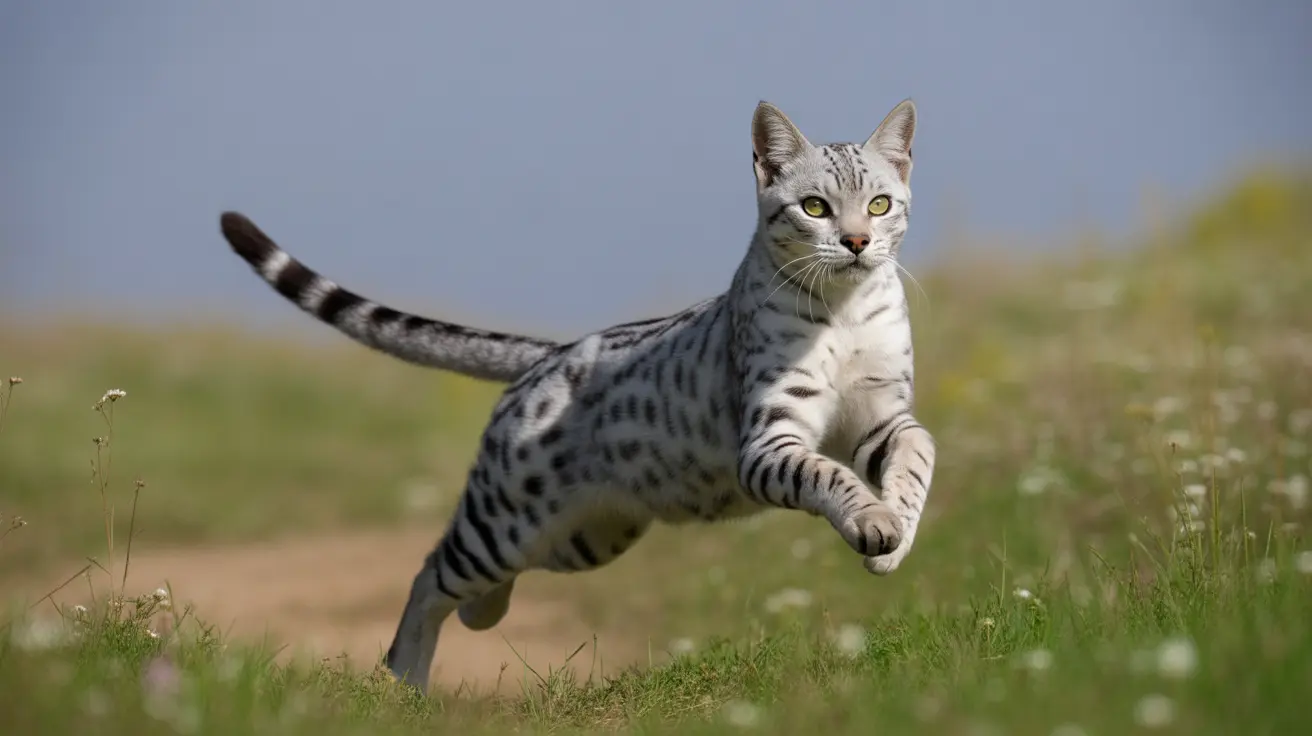Maximum Speed: Just How Fast Can Cats Run?
The average house cat can reach speeds between 20-25 miles per hour (32-40 km/h), with some exceptional athletes hitting up to 30 mph (48 km/h). To put this in perspective, that's faster than Olympic sprinter Usain Bolt's record-setting speed of 27.8 mph!
However, cats are built for short-distance sprints rather than marathons. They typically maintain these high speeds for only 50-100 meters before needing to rest and recover.
The Anatomy of Speed: Why Cats Are Built for Running
Cats possess several unique anatomical features that enable their impressive running abilities:
- Powerful hind legs that act like coiled springs
- Flexible spine that extends and contracts during running
- Lightweight, aerodynamic body structure
- Retractable claws for enhanced traction
- Digitigrade stance (walking on toes)
- Superior reflexes and quick-twitch muscle fibers
Elite Runners: The Fastest Cat Breeds
While all healthy cats are capable of impressive speeds, some breeds are particularly known for their running prowess:
- Egyptian Mau: Often considered the fastest domestic cat breed
- Bengal: Wild ancestry contributes to exceptional athleticism
- Abyssinian: Known for high energy and athletic ability
- Savannah: Long legs and lean build enable impressive acceleration
Factors Affecting Feline Speed
Several factors influence how fast a cat can run:
- Age: Peak performance typically occurs between 2-4 years
- Weight: Obesity significantly reduces running speed
- Health status: Joint issues or illness can impact mobility
- Surface type: Natural surfaces provide better traction
- Motivation: Prey drive or perceived threats trigger top speeds
Maintaining Your Cat's Speed and Agility
To help your cat maintain their natural athletic abilities:
- Provide regular exercise opportunities through play
- Maintain a healthy weight through proper diet
- Create vertical spaces for climbing and jumping
- Use interactive toys to encourage short sprints
- Schedule regular veterinary check-ups
Frequently Asked Questions
How fast can an average house cat run compared to a human sprinter?
An average house cat can run 20-25 mph, while elite human sprinters reach about 28 mph. Most cats can outrun the average human, who typically maxes out at 15 mph.
Which domestic cat breeds are known to be the fastest runners?
The Egyptian Mau is considered the fastest domestic cat breed, followed by Bengals, Abyssinians, and Savannahs. These breeds commonly reach speeds of 25-30 mph.
What anatomical features enable cats to reach speeds up to 30 mph?
Cats achieve high speeds through powerful hind legs, flexible spines, retractable claws for traction, and a lightweight, aerodynamic body structure. Their digitigrade stance and quick-twitch muscle fibers also contribute significantly.
How does a cat's environment or motivation influence how fast it runs?
Cats run fastest on natural surfaces like grass or dirt where their claws can grip effectively. They achieve top speeds when chasing prey or fleeing perceived threats, as these situations trigger their natural instincts.
What can cat owners do to help their cats maintain or improve their running speed?
Owners should encourage regular exercise through interactive play, maintain their cat's healthy weight, provide climbing opportunities, and ensure regular veterinary care to maintain joint health and overall fitness.
Understanding your cat's impressive running abilities helps appreciate these remarkable animals even more. While they may not need to chase down prey in our homes, maintaining their natural athletic abilities through proper care and exercise ensures they stay healthy and happy throughout their lives.






